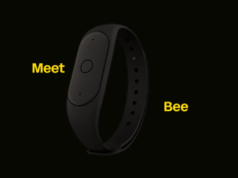Photos of Dell’s very own x86 Windows 10 Mobile device got leaked the last weekend and new information that reached the web today provides us with a closer glimpse at how exactly the company planned this phone to work.
Codenamed Dell Stack, the x86 Windows 10 Mobile device was more of a small tablet, as it featured a display of no less than 6.4 inches in size, according to leaker Evan Blass.
And although this might seem huge at first glance, Dell had a different goal in mind when going for such a large display. The Stack was supposed to serve multiple purposes and be used as a desktop and laptop as well, using the power of Continuum, the Windows 10 Mobile feature that allows a phone to double as a desktop when connected to an external screen.
Might never launch
Work on the project started in mid-2014, the same source adds, and was supposed to enable users to always have their data with them, without cloud transfers that take place between devices. Basically, Dell aimed to offer users full portability with a device that can be easily carried around, but at the same time, without compromising the desktop, tablet, or phone experience in any way.
Furthermore, it appears that the phone was capable of running the full Windows 10 when docked, which means that it offered a truly genuine desktop experience to users.
The Dell Stack was developed to be powered by Intel’s Kaby Lake Y-series x86 processors, and the company planned different configurations, including m3, m5 vPro, and m7 vPro. There were several hardware options as well, with either 4GB or 8GB RAM, 128GB or 256GB storage (plus the typical microSD card support that’s offered on the majority of Windows phones).
The 6.4-inch device was designed to measure less than 9 mm in thickness, and come with features such as an iris scanner for Microsoft’s Windows Hello biometric authentication.
At the moment, it’s not yet clear if Dell still wants to release the device, but it appears that it was originally scheduled to go live in spring of 2017. Dell might have very well canceled it, but the current state of the phone is unknown, so it remains to be seen if the company launches it or not. But even if it doesn’t, x86 Windows phones might have a future, and there’s no doubt that Microsoft needs to be part of it.







